Album of Mughal Portraits 17th-18th century
Ink and opaque watercolour including metallic paints on paper. | 29.8 x 21.1 cm (book measurement (conservation)) | RCIN 1005038

Mughal artist
Album of Mughal Portraits 17th-18th century
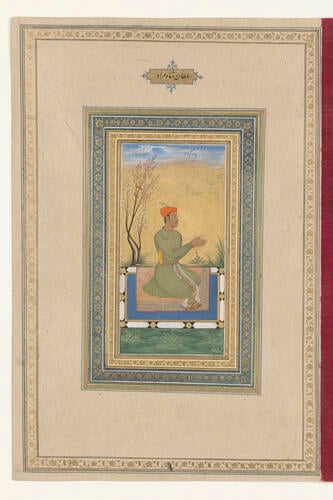

Mughal artist
Master: Album of Mughal Portraits Item: Portrait of Emperor Babur 17th-18th century
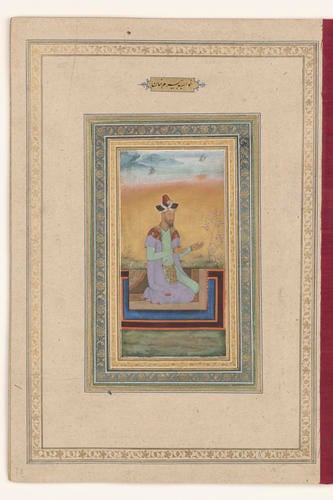
Mughal artist
Master: Album of Mughal Portraits Item: Portrait of Bayram Khan 17th-18th century

Mughal artist
Master: Album of Mughal Portraits Item: Portrait of Muzafar Khan 17th-18th century
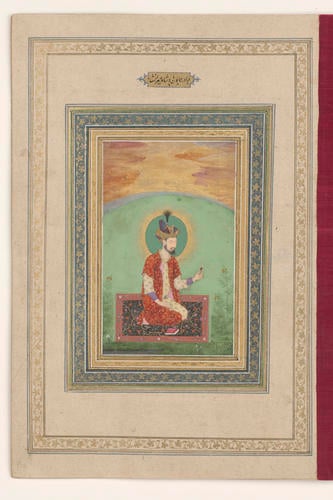
Mughal artist
Master: Album of Mughal Portraits Item: Portrait of Miran Shah 17th-18th century
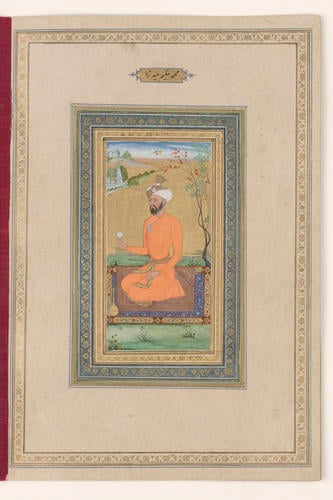
Mughal artist
Master: Album of Mughal Portraits Item: Portrait of Muhammad Hakim Mirza 17th-18th century
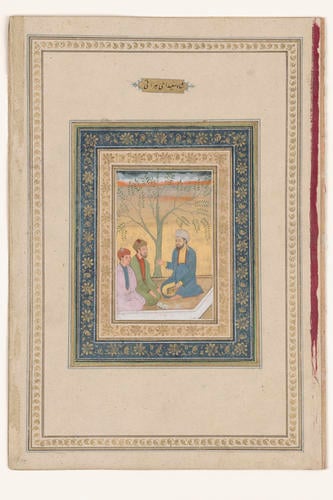
Mughal artist
Master: Album of Mughal Portraits Item: Portrait of Shah Saida-yi Herati 17th-18th century
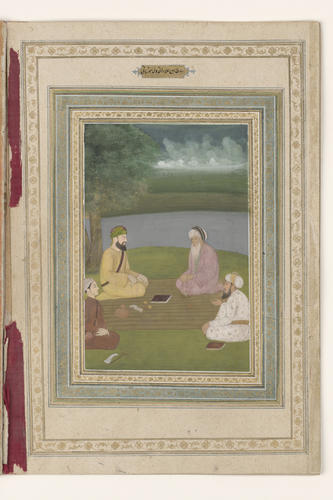
Mughal artist
Master: Album of Mughal Portraits Item: Portrait of Sultan Ala al-Dawlah Simnani 17th-18th century
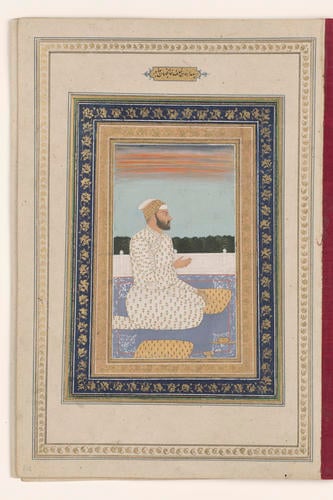
Mughal artist
Master: Album of Mughal Portraits Item: Portrait of Sipahdar Khan 17th-18th century

Mughal artist
Master: Album of Mughal Portraits Item: Portrait of Sultan Danyal 17th-18th century
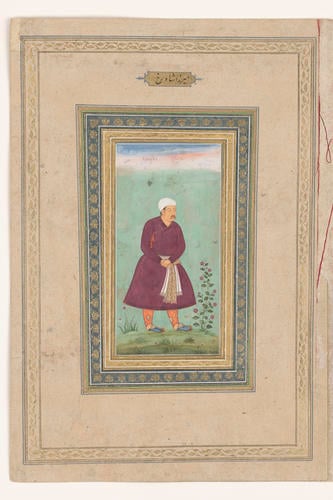
Mughal artist
Master: Album of Mughal Portraits Item: Portrait of Mirza Shah Rukh 17th-18th century
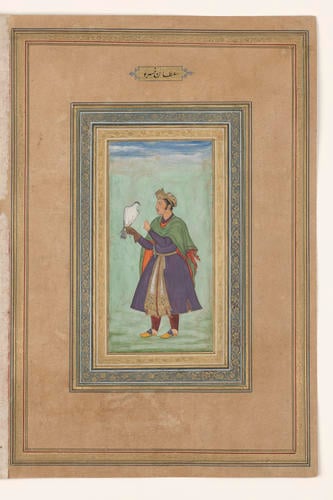
Mughal artist
Master: Album of Mughal Portraits Item: Portrait of Sultan Khusraw 17th-18th century
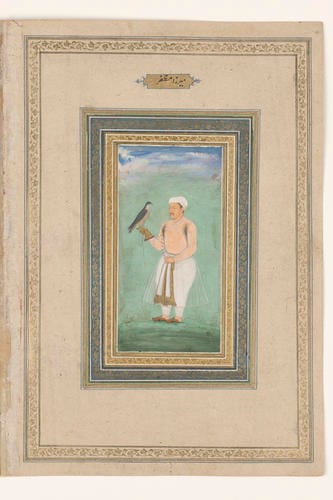
Mughal artist
Master: Album of Mughal Portraits Item: Portrait of Mirza Muzaffar 17th-18th century

Mughal artist
Master: Album of Mughal Portraits Item: Portrait of Afrasiyab Khan Qushbaygi 17th-18th century
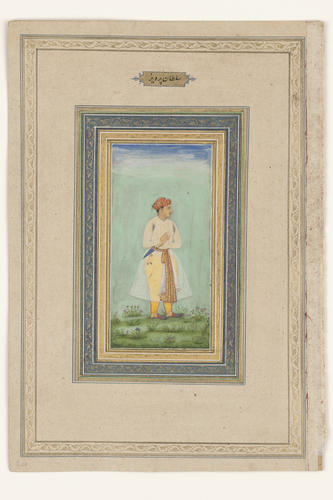
Mughal artist
Master: Album of Mughal Portraits Item: Portrait of Sultan Parviz 17th-18th century

Mughal artist
Master: Album of Mughal Portraits Item: Portrait of Nawab Asad Khan 17th-18th century
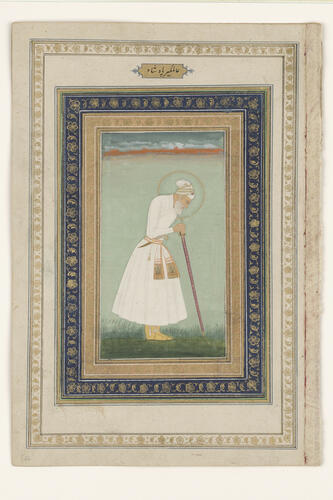
Mughal artist
Master: Album of Mughal Portraits Item: Portrait of Emperor Alamgir (Awrangzeb) 17th-18th century

Mughal artist
Master: Album of Mughal Portraits Item: Portrait of Raja Todar Mal 17th-18th century
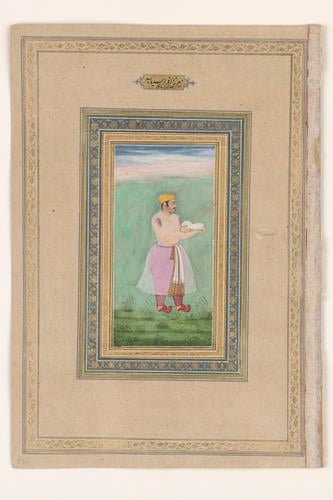
Mughal artist
Master: Album of Mughal Portraits Item: Portrait of Mirza Afrasiyab 17th-18th century
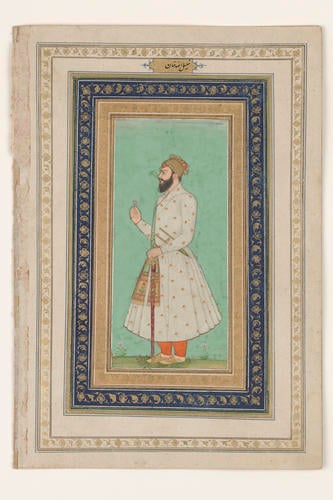
Mughal artist
Master: Album of Mughal Portraits Item: Portrait of Khalilullah Khan 17th-18th century
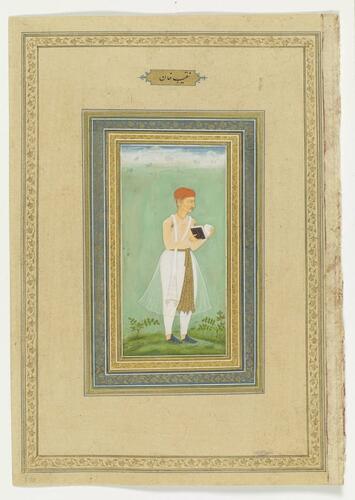




















-
A Mughal album of 17th century portraits and specimens of calligraphy remargined and rebound with additional folios in 18th century Delhi or Awadh (c.1750-70). Each folio is stamped with the seal of Asaf al-Dawlah, Nawab of Awadh dated 1776-7 (see also RCIN 1005069).
The portraits in this album form three distinct groups: a set of six painted for Prince Salim (as the Mughal emperor Jahangir was known before his accession) dating to the years 1600–4 when he rebelled against Emperor Akbar and set up a semi-independent court in the city of Allahabad; a later group of 24 dating to c.1600–30; and 28 others, largely unrelated, spanning the years c.1630–1750.
The Allahabad portraits depict Salim's Great-Grandfather, Babur, the founder of the Mughal dynasty; his Grandfather, the second Mughal emperor, Humayun; his Great-Uncle, Mirza Kamran; his Uncle, Muhammad Hakim; his recently-deceased brother, Murad; and Bayram Khan, a chief courtiers during the reigns of Humayun and Akbar. The paintings are in an idealised Persianate style. Each figure kneels on a namad rug in garden setting against a plain gold background, in some instances surmounted by a streaky blue sky inhabited by birds in flight. One painting is dated 1603, and another contains a treasonous dedicatory inscription to 'Padshah [Emperor] Salim'.
The portraits in the album dating to c.1600-20 relate to those commissioned by Emperor Akbar towards the end of his reign. Each depicts a single standing figure against a green background, often in profile or three-quarter profile, hands folded in front or leaning on a staff as if attending the imperial durbar. It is likely that these portraits, or tracings of them, were used as templates for illustrations of Mughal court scenes.
Both these and the Allahabad period portraits had inscriptions identifying their subjects in their original borders which were cut and pasted onto the reverse sides of the folios in the late eighteenth century. This suggested they once formed a group distinct from the rest of the paintings in the album.
The later portraits are a mix of seventeenth and eighteenth century paintings, including depictions of courtiers of Shah Jahan and Alamgir. Suggestions of ground and sky were added to many of the portraits in the eighteenth century to give them greater uniformity. These portraits are also distinguished from those of the earlier groups by their dark blue, as opposed to pale blue, inner borders.
The openings alternate between pairs of facing portraits and pairs of panels of calligraphy. The calligraphy panels can also be divided into those belonging to the 'original' album, which all have the same pale blue border as the portrait folios, and later additions, with darker blue borders. Most of the texts are quatrains taken from works by Jami and Abu Said Abu Khayr which have been pasted diagonally across the page in two bayts. Each line of calligraphy is enclosed by a cloud form surrounded by gold illumination to form a rectangular panel. The remaining areas of the page are decorated with stencilled floral illumination.
Among the later additions are texts ascribed to the calligraphers Sultan Ali Mashhadi, Mir Ali, Muhammad ibn Ishaq al-Shahabi, Abd al-Rahim, Malik Muhammad Arabili, Muhammad Ali Quli, Mohsen Shafi, Hayder Ali and Abdullah al-Husayni
The paintings and panels of calligraphy are mounted into wide borders of heavily burnished cream paper, thought to date to the late 18th century. The illuminated frontispiece is taken from an earlier volume, the original central panels of which were replaced with portraits of the Emperor Jahangir and an unnamed Ottoman sultan. This frontispiece was also likely added to the volume in the second half of the 18th century. The folios are bound into a dark red morocco binding with gold block-stamped decoration of the same date.
The seal of Asaf al-Dawlah dated 1190AH (1776-7) appears on every folio. Other seals and inspection notes date to 1791 and 1800. The volume is thought to have been presented to George IV with RCIN 1005069 in the early 19th century.
For all 58 individual folios see RCINs 1005038.a - 1005038.bf.Provenance
Formerly in the Royal Library at Lucknow; acquired by George IV after 1800.
-
Creator(s)
(artist)(calligrapher)(calligrapher)(nationality) -
Medium and techniques
Ink and opaque watercolour including metallic paints on paper.
Measurements
29.8 x 21.1 cm (book measurement (conservation))
29.7 x 20.4 cm (folio dimensions)
Category








